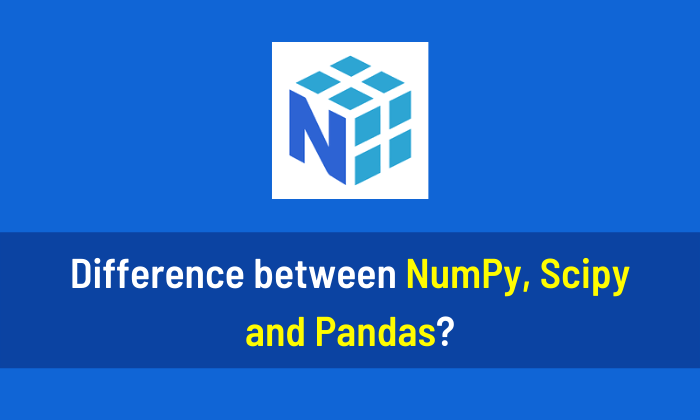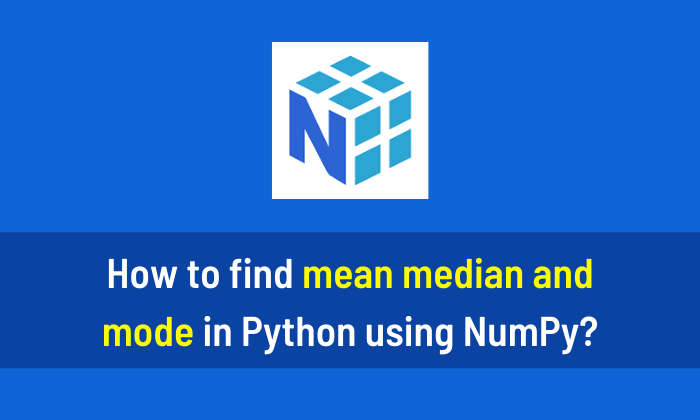In this article, I will explain the difference between NumPy, SciPy, and Pandas. NumPy is the abbreviation of numerical Python. SciPy is the abbreviation of scientific Python. These two libraries are used for scientific computations. These libraries provide a wide range of functionalities. Most of the visualization libraries in Python use NumPy for their mathematical tasks. SciPy also uses NumPy for some of its tasks. On the other hand, Pandas is the most famous library for data analysis and manipulation. All of these are the most popular libraries of Python. If you want to learn Python, I highly recommend reading This Book.

NumPy vs SciPy vs Pandas
| NumPy | SciPy | Pandas | |
| Installation | pip install numpy | pip install scipy | pip install pandas |
| Written in | C, Python | C, C++, Python, Fortran | C, Python, Cython |
| Used for | Mathematical or numeric calculation | Scientific computing and technical computing | Data analysis and manipulation |
| Work with | Numerical data | Numerical data | Tabular Data |
| Data Structures | Array | Array, Sparse matrices, and k-dimensional trees | Series and DataFrame |
| Speed | Faster than other libraries | Fast computational power | Slower than NumPy |
| Performance | High Performance when rows are less | Similar as NumPy | High Performance when a large number of rows |
| Usage | Easy to use | Not easy as NumPy | Easy to use |
| Modules/ Functions | Linear Algebra, Mathematical functions, Statistics, Sorting, searching, and counting | Linear Algebra, Integration, Signal Processing, Image Processing, Statistics, Fourier Transforms, Interpolation, and optimization. | Read Data, Indexing and Selecting Data, Reshape, Visualization, Time Series Data, Handle Missing, Categorical, and Text Data |
| Built on | NumPy doesn’t use SciPy or Pandas | Top of the NumPy | Pandas also use NumPy for their tasks. |
| My Recommendation | When you want to perform basic mathematics/ statistics operations. For Example, Mean, Mode, Median | When you want to perform advanced mathematics/statistics tasks. For Example, Integration, linear algebra, signal processing, interpolation, and optimization. | When you want to handle tabular data i.e. rows and columns. If your data has more than 100k rows then it provides high performance relative to Microsoft Excel. For Example, Read the data, Analyze the data, and manipulate the data. |


